- Getting around Lijiang. Dont stay in the Old Towns more than 2 days, there is nothing to do. KRISS Oct 9, 2013 05:46
- 2013 Beijing Temple Fair BENNYLAU Feb 26, 2013 03:29
- Malaysian traveling from KUL - LAX vis Shanghai PVG ZATI_DY Jan 3, 2013 20:15
Recycling - the Art of Arts
- Views: 6735
- |Vote: 0 0
- |Add to Favorites
- |Recommend to Friends
A wall of modern office blocks and low-rise concrete buildings generic to all Chinese cities rose up before me blocking any hope I have of glimpsing the sea. I feel disappointed and cheated that what I have longed to see is still beyond my reach. I have a picture in my mind. It was painted for me with stories written by people who had lived here more than half a century ago – of a sleepy port nestled beneath protective hills overlooking the sea and the beach with headlands and bays to the east and west and small islands lying just offshore like a string of pearls.
Before my bus stops we pass MacDonalds, KFC and a Wal-Mart all boldly proclaiming that Shandong is no longer the poor cousin of her neighbouring Provinces. With my preconceptions of Yantai shattered I turn my attention to finding the hostel that is also offering much promise. I jump in a taxi and ask him to take me to where I think my accommodation is but I quickly realize I may be very wrong in my assumptions. Finally I show him the address and he points in the opposite direction back from where we have come and who am I to argue with a local.
We then phone the hostel to confirm the address. He is correct, as I knew he must be and we do a quick about face and begin to head west and further out of town. What could I do but trust the guy as I watched the meter tick over and the town receding behind us! We eventually pull into the recycled villa style Yantai Youth Hostel just meters from the beach in the New Economic Zone. I begrudgingly pay my taxi fare, and thank my kind driver who has come inside to be sure he has delivered me to the right place. I’m none too happy about the hostels distance from downtown but it is clean, comfortable and more importantly cheap.
Yantai has been on my special list of destinations ever since I first came to China. It isn’t just a beach resort where I hope to enjoy a swim or a sail at the end of yet another hot and humid summer traveling through China. Yantai, once known as Chefoo is the birthplace and home for the briefest of times of one of my friends back home. While I was home earlier this year I had done what I thought was sufficient reading and research to enable me to locate and visit where her family had lived in Chefoo until the Americans entered the war – before that they had been safe, considered neutral. She was born several months after their initial internment and moved with her family to Weixian POW camp until their release by which time she was three years old.
I soon discover to my dismay that I have left behind most of my research information, including a small sketch map I had made of the bay and the places I am hoping to explore – references gleaned from books written years later by students or teachers at the Missionary School during the war years. This would not stop me searching but it would make things difficult as my points of reference were now limited to my memory and the chance of meeting someone who spoke enough English to help me out. But I have time on my side.
The sun is already high overhead as I stand on the Smoke Platform looking seaward. I half expect to see the stately sails of ancient galleons and merchant ships ghosting silently from the mist. Was it ever possible to see ships as they passed through on their way to the capital, I wonder? This smoke platform was originally built on the small headland of Yantai Shan by the Ming government in 1398 as a warning beacon sending signals to the capital of the enemies approach. Today it was difficult to imagine that anyone could see smoke emanating from this ancient platform, which gives Yantai city its present name.
As I searched the horizon – where I knew it to be – it was impossible to distinguish where the sky ended and the sea began. They were both grey – only a vague outline of the offshore islands gave me any clue. It seemed that all of Shandong Province was enveloped in the same misty pall that I had hoped to leave behind in Beijing. I have slept late this morning, enjoying the quiet solitude of my dorm room after a good nights sleep. But now I am anxious to explore this small coastal city that is steeped in history. The old Smoke Platform, once the highest structure on the hill, is actually a huge stone oven, stoked from below drawing smoke skyward through a tall chimney. Both the platform and the small Dragon King Temple beside it are now dwarfed by the lighthouse, which shines day and night, through fine or fog filled skies. It is the lighthouse that has also led me up to the hill from where I got off the bus somewhere near the railway station, which I knew to be near the docks.
Narrow streets walled in by those ugly squat generic concrete blocks run parallel to the coastline so I know that a left turn or two would guarantee my arriving somewhere along the waterfront. It is early afternoon when I arrive and a fine rain is misting in. I draw stares from the locals who are still working stalls in the vegetable and meat market as I wander through for my first sight of the water. It’s dirty and grey reflecting the colour of the sky. To my left the crisp clean lines of China Maritime Transport Company’s Dalian –Yantai passenger ferry is like a breath of fresh air. Probably the only boat in the port that I could make out, painted crisp white with a splash of blue, green, grey and red. To my right a tubby little tug boat, her rusty hull devoid of colour, and her once white wheelhouse dotted with anti-rust paint looks more like an acne faced adolescent youth.
At intervals along the dock, broad concrete piers jut into the bay. A rusty fence with gates at each of the piers bars access to unauthorized persons, me included. The harbour is chock full of relatively modern steel fishing boats, and I’m curious to see so many in port in what to me seemed like perfect weather to put to sea. I stand peering through the wire mesh at a raft of identical craft, hulls painted ‘china’ blue, large white names and numbers splashed across their bows above slightly rusted anchors, while neat white wheelhouses and sturdy superstructure hold aloft ‘state of the art’ navigation and sonar equipment.
On the opposite side of the same pier lies a similar raft of fishing boats each with a subtle list to port as if resigned to their fate. With once white hulls dripping rust and their red national flags fluttering proudly in the afternoon breeze, they beg the question. ‘Retired and ready for recycling or just waiting for a refit?’ A work of modern art on any other canvas there is a sense of sorrow, of loss, of emptiness staring blankly out from glassless windows. I ask around but it is clear that this fleet of almost identical rust buckets have passed their days of usefulness, superseded by a new and younger generation.
With her naturally protected deepwater harbour and proximity to Beijing, Yantai was a natural choice as one of the Foreign Treaty Ports in northern China. During the 19th century as many as twenty countries built their consulates here to protect the interests of diplomats, merchants and entrepreneurs. Seventeen of these were built on Yantai Shan around the Smoke Platform with its commanding views of the shipping lanes where passenger liners depart for the homeports of Tianjin and Dalian and the Korean ports of Pusan and Kunsan. Cargo and container ships disperse a myriad of produce to over 100 international ports around the world.
As the afternoon wears on the fog begins to lift, revealing sweeping bays punctuated by smaller headlands, islands floating in a sea of salty haze and a new cityscape mushrooming from fertile foundations. Amongst the recycled consulates, the British has by far the best location and like many of the other buildings on the headland it is now a museum, housing a display of locks, keys and handcuffs, the pride of the Tri-Circle Lock Company based here in Yantai. The Danish Consulate, built in 1860 of stone in traditional style, is one of the oldest and sits highest on the headland overlooking the new harbour. And just as in Copenhagen, ‘The Little Mermaid’, this one a replica of course, watches over seagoing ships and sailors. The Japanese Consulate houses a Folk Art display while the American is home to an array of Beijing Opera costumes. The Time-Piece Museum, a tribute to one of the cities oldest and most successful industries is interesting but hot and poorly lit.
The remainder of the consulates stand alongside merchant business houses, private homes, schools and churches in the foreign concession, which stretches east along the bay - another fascinating record of China's semi-colonial past. A new and grand bay side boardwalk and plaza has been constructed to show case this transition from yesterday. Great effort has been invested in the preservation and restoration of these colonial buildings of old Chefoo, which stand in the shadow of modern progress with steel and mirrored glass towering over earthy chiselled stone and clay tiles.
Around the base of the Yantaishan, a recycled remnant of the old city remains, as guesthouses, bars and restaurants. While I find some helpful locals in my search for the school, even taking me to visit the Education Bureau, they all encourage me to believe that a school opened for Chinese students in 1900 is the one I am looking for but I know the dates do not correlate so I thank them for their help and keep looking on my own. I take a long walk east along the coastal boardwalk, through the restored foreign concession past the Catholic School’s boys and girls dormitory buildings until I stumble on the Naval Academy and realize that this is what I am looking for.
Hudson Taylor’s Mission School was founded in 1881, on land that a farmer offered to sell, built from hand made mud bricks, locally quarried stone and timber salvaged from two ships, the Ada and the Christian, wrecked sometime earlier in the bay. From small beginnings it was soon one of the best schools in northern China for expatriate children. Today this recycled school is off limits to the general public – ironically but perhaps no surprising a school for training Chinese sailors.



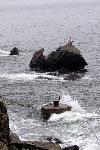
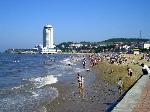
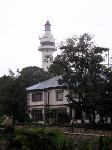
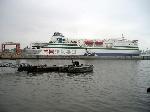
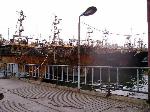
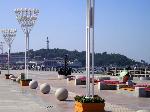

 Copyright © 1998-2025 All rights reserved.
Copyright © 1998-2025 All rights reserved.